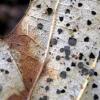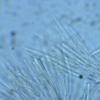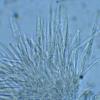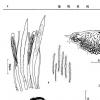
02-03-2015 15:13
Chris JohnsonGood afternoonFound growing on the partly desiccat

01-03-2015 00:10
Patrice TANCHAUDBonjour,récolte réalisée sur mousses au sol en

01-03-2015 14:48
 Jenny Seawright
Jenny Seawright
Hello all, Hoping that help might be possible with

01-03-2015 14:56
 Andreas Gminder
Andreas Gminder
Hello, today Tanja found a small white stipit

01-03-2015 13:22
Nina FilippovaDear forum,I have something Botrytis- like that ma

27-02-2015 19:19
 Jenny Seawright
Jenny Seawright
Hello all, I wondered if it would be possible for

27-02-2015 17:16
 Blasco Rafael
Blasco Rafael
Hola él recogido esta muy Pequeña Muestra sobrio
Hello,
Coccomyces dimorphus, described by Liang et al. (Mycosystema, 19(1), p. 3-6, 2000),
has two types of asci (normal cylindrical and lanceolate) in a ascocarp.
Does anyone know other discomycetes having such dimorphic asci?
Kutsuna

A close study of the acus base woud perhaps clarify. Asci and paraphyses emerge from two separate hyphal systems. Often the ascogenous system carries croziers, the paraphysogen never.
Another possibility would by intrahymenial parasitism by another ascomycete, but this seems to me rather unllikely.
If you have a a pdf of the Liang paper I would be happy to see it. You could, e.g., attach as a nouveau fichier.
Zotto
Both type asci inamyloid, and I can't see croziers.
In Liang's paper, paraphyses are "rare", I can't observe thread-like paraphyses.
I send Liang's paper ?mainly in Chinese??by e-mail.
Kutsuna




